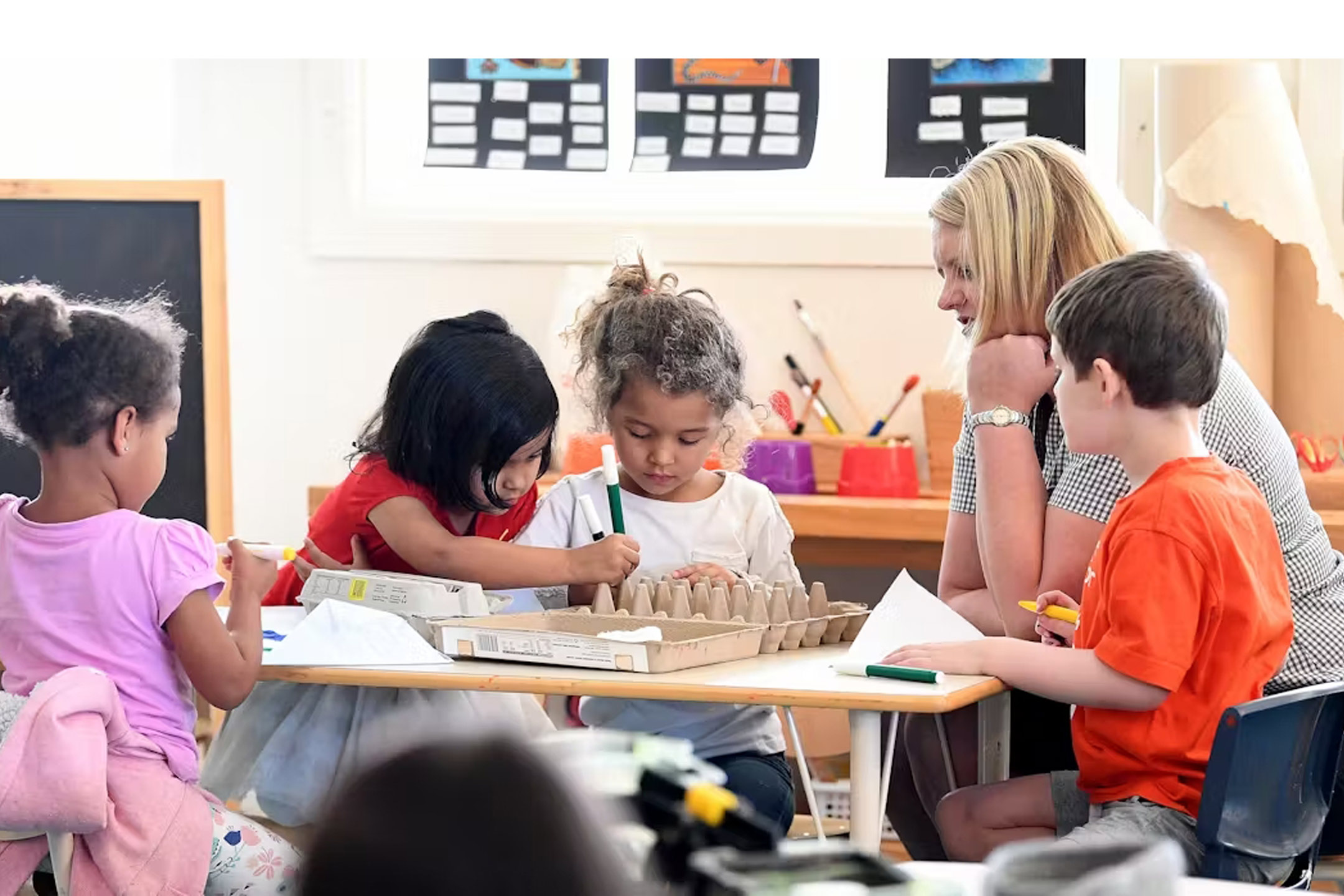
09 Jan A major new childcare report glosses over the issues educators face at work
Researcher Marg Rogers, looks closer at the report and also at why educators are leaving in droves
The Productivity Commission has just released a major report as part of its inquiry into early childhood education and care.
The draft recommendation that all children under five should have access to three days a week of “high quality” early education is grabbing headlines.
But if this is going to happen, we need a workforce to provide it. And in its report, the commission glossed over educator burnout and their working conditions. This is what makes it so difficult to retain staff.
Our research shows why this needs to change.
What does the Productivity Commission say?
The interim report (the final report is due in June 2024) repeatedly noted how early childhood education and care is important to children and families’ wellbeing. If families cannot access high-quality services, parents cannot work and children do not get the education and development opportunities they need to thrive.
The report does note “workforce challenges” and issues with pay and conditions – noting some staff were leaving for “lower stress” jobs. It also noted these this has been a “major concern” for the sector for “many years”.
But it does not specifically address educators’ wellbeing.
Vacancies at ‘record highs’
Early childhood educators are passionate about their jobs and well trained, but they are leaving the sector in droves.
The commission’s report notes vacancies for early childhood education and care positions are at “record highs and vacancy rates are above those of the wider workforce”. It suggests the sector has more than 5,000 vacancies Australia wide.
This figure does not consider the early learning services that have closed, reduced their capacity or simply stopped advertising because of low staff.
Our research
Our previous research showed educators around the world (including Australia) are at risk of burning out. This is due to inadequate support from their workplaces, a focus on collecting administrative data over interacting with children, low pay and low status.
Our new study looked at the experiences of Australian educators at the height of COVID lockdowns, to understand the new pressures on the workforce and the ways they adapted. This involved online interviews with six educational leaders from different service types in regional and rural NSW.
During COVID early childhood educators kept working but were not prioritised for vaccinations, despite constant contact with parents in high-risk jobs. New requirements from health authorities were constant and services often had to work out-of-hours to implement them at little notice.
As one interviewee told us:
No wonder we are burnt out when even our weekends and annual leave are interrupted.
Extra duties included deep cleaning, further administrative reporting, extra communication with parents and constant adjustment to staffing. But there was no extra funding to go with this work. As one interviewee told us:
We had this good group of casuals […] They didn’t have work, so there were […] some emotional times with staff […] because we couldn’t employ them.
At the same time, childrens’ and families’ needs increased, with the stress of the pandemic and waves of lockdowns. Another interviewee spoke of the emotional demands they faced:
[staff] were stressed – they were concerned about themselves, [and] their family. I had older staff, […] Indigenous staff [and was] trying to support […] and care for them.
Things have not necessarily improved
The pandemic has thankfully eased, but despite being essential workers, educators do not have the recognition and support they deserve. Their work continues to demand a lot for low status and little pay.
For example, the median wages of qualified teachers who work in the early learning system are about 20% lower than those of primary school teachers.
They continue to work in highly regulated systems, with burdensome administrative processes for quality assurance. This work includes assessment, rating, quality assurance plans, programming and safety documentation.
This can necessitate unpaid hours. And the emphasis on documentation and data collection reduces educators’ time with children and job satisfaction.
Other stressors have also replaced COVID requirements. This includes the impact of climate change (which also means keeping children safe and healthy in very hot, smoky or rainy weather), cost-of-living pressures and a housing crisis. These issues affect educators and the families and children they support.
We need to do 4 things
The Productivity Commission has a huge job to do in examining early education and care. But it has not yet adequately grappled with the causes of educator burnout and attrition.
To attract and retain the workforce required for the sector, we need to do four things:
- fund wellbeing programs, including, peer support, mentoring programs, coaching and counselling for early childhood educators
- provide incentives for educators to work in “childcare deserts”, where services are scarce (this includes regional, rural and remote areas and poorer metropolitan suburbs)
- overhaul administrative burdens
- make early learning part of the education system to improve educators’ pay, status and conditions.
Until system-wide issues are addressed and governments prioritise educator wellbeing, we are not going to get the workforce we need to educate and care for young children in Australia.
Professor Margaret Sims (Macquarie University) and Associate Professor Wendy Boyd (Southern Cross University) were co-researchers in this study.![]()
Marg Rogers, Senior Lecturer, Early Childhood Education; Post Doctoral Fellow, Manna Institute, University of New England
This article is republished from The Conversation under a Creative Commons license. Read the original article.

